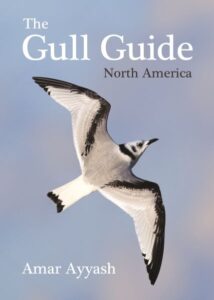 Gulls – even for the most experienced birders and birdwatchers, this is perhaps one of the most fear-inducing words in the English language. After all, from a field identification perspective, the fifty-four species in the eleven genera of the Laridae commonly referred to as gulls can be, and more often than not are, bewildering. With a colour palette generally limited to black, white, and infinite shades of greys and drab browns, multiple age-related plumages, and a nasty tendency to hybridize, many of the avian-ogling community who catch sight of one in anything other than text-book-perfect adult breeding plumage simply note it as “gull, sp.”
Gulls – even for the most experienced birders and birdwatchers, this is perhaps one of the most fear-inducing words in the English language. After all, from a field identification perspective, the fifty-four species in the eleven genera of the Laridae commonly referred to as gulls can be, and more often than not are, bewildering. With a colour palette generally limited to black, white, and infinite shades of greys and drab browns, multiple age-related plumages, and a nasty tendency to hybridize, many of the avian-ogling community who catch sight of one in anything other than text-book-perfect adult breeding plumage simply note it as “gull, sp.”
A long list of field guides, reference books, and books proposing systems for gull identification (with varying respective levels of utility and effectiveness) have been published over the past few decades. The problem is that those that are the most detailed and accurate have also tended to be, by necessity, the most complex. However hopes are particularly high for Amar Ayyash‘s new The Gull Guide: North America to be a book able to provide interested birders, birdwatchers, and naturalists alike with a meaningful new reference tool to the family.
Mr. Ayyash, a teacher of mathematics by occupation, an avid and respected authority on gull field identification, and – given his extensive popular outreach regarding them – gull evangelist by avocation, has gathered together nearly two thousand photographs depicting thirty-six gull species and seven often noted hybrids of gulls recorded as occurring across North America that present the key characteristics of all age groups, from juvenile through adult plumages. He has also included a number of other helpful tools, including side-by-side depictions and one of the best single page “essential markings” charts that I’ve yet had the pleasure of seeing, to help his readers make informed and well-reasoned field identifications of these dashedly tricky-to-identify seabirds.
I have already begun putting this new guide through its paces along the rivers and Pacific Ocean coastline near my Oregon home, and so far it has performed admirably (and this is coming from one who has long held, and still generally does, a noted preference for illustrated over photographic guides). Following further field testing, I’ll be bringing you a more detailed assessment of this book in the near future.
If you enjoyed reading this, please consider signing up for The Well-read Naturalist's newsletter. You'll receive a helpful list of recently published reviews, short essays, and notes about books in your e-mail inbox once each fortnight.
